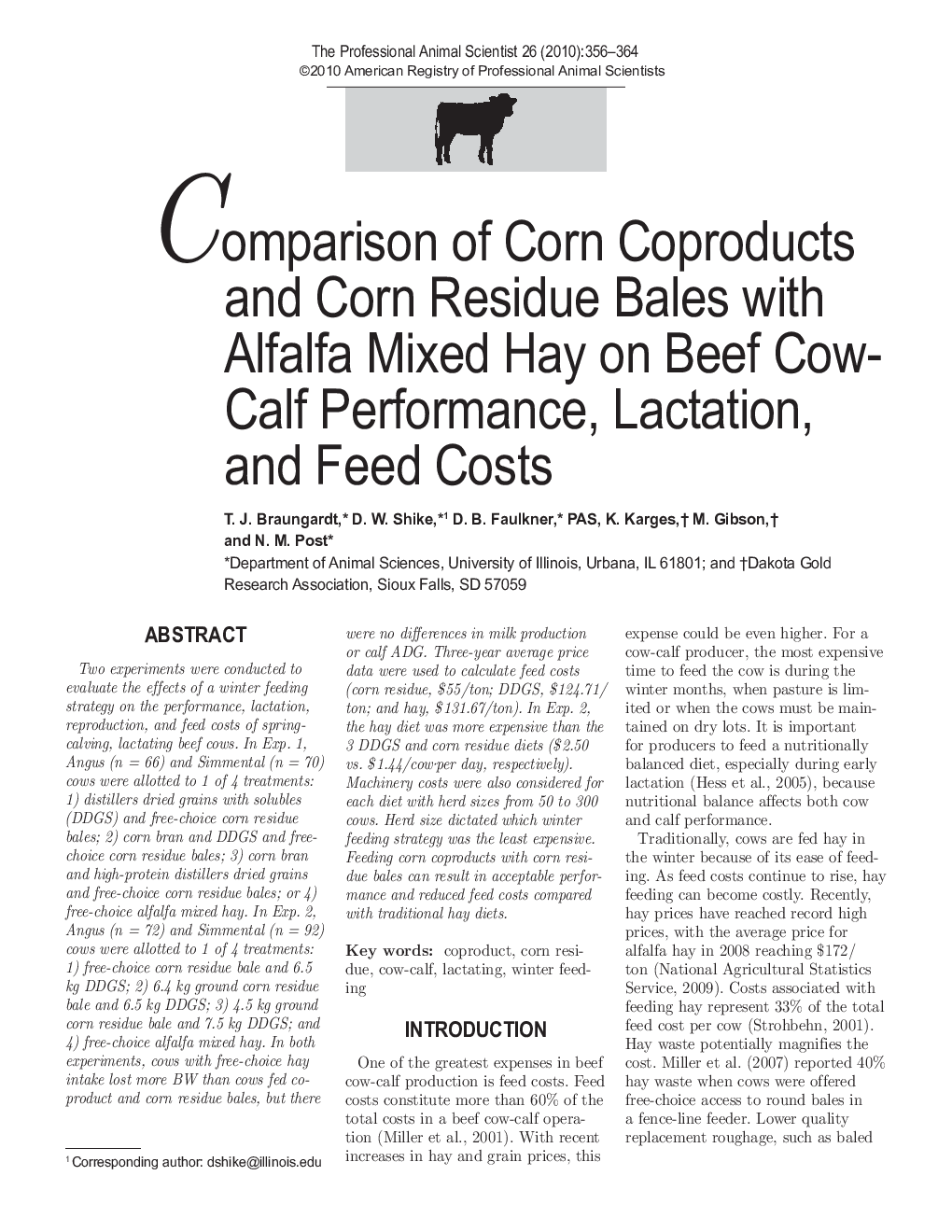| Article ID | Journal | Published Year | Pages | File Type |
|---|---|---|---|---|
| 2454085 | The Professional Animal Scientist | 2010 | 9 Pages |
Abstract
Two experiments were conducted to evaluate the effects of a winter feeding strategy on the performance, lactation, reproduction, and feed costs of springcalving, lactating beef cows. In Exp. 1, Angus (n = 66) and Simmental (n = 70) cows were allotted to 1 of 4 treatments: 1) distillers dried grains with solubles (DDGS) and free-choice corn residue bales; 2) corn bran and DDGS and freechoice corn residue bales; 3) corn bran and high-protein distillers dried grains and free-choice corn residue bales; or 4) free-choice alfalfa mixed hay. In Exp. 2, Angus (n = 72) and Simmental (n = 92) cows were allotted to 1 of 4 treatments: 1) free-choice corn residue bale and 6.5 kg DDGS; 2) 6.4 kg ground corn residue bale and 6.5 kg DDGS; 3) 4.5 kg ground corn residue bale and 7.5 kg DDGS; and 4) free-choice alfalfa mixed hay. In both experiments, cows with free-choice hay intake lost more BW than cows fed coproduct and corn residue bales, but there were no differences in milk production or calf ADG. Three-year average price data were used to calculate feed costs (corn residue, $55/ton; DDGS, $124.71/ton; and hay, $131.67/ton). In Exp. 2, the hay diet was more expensive than the 3 DDGS and corn residue diets ($2.50 vs. $1.44/cow · per day, respectively). Machinery costs were also considered for each diet with herd sizes from 50 to 300 cows. Herd size dictated which winter feeding strategy was the least expensive. Feeding corn coproducts with corn residue bales can result in acceptable performance and reduced feed costs compared with traditional hay diets.
Related Topics
Life Sciences
Agricultural and Biological Sciences
Animal Science and Zoology
Authors
T.J. Braungardt, D.W. Shike, D.B. PAS, K. Karges, M. Gibson, N.M. Post,
